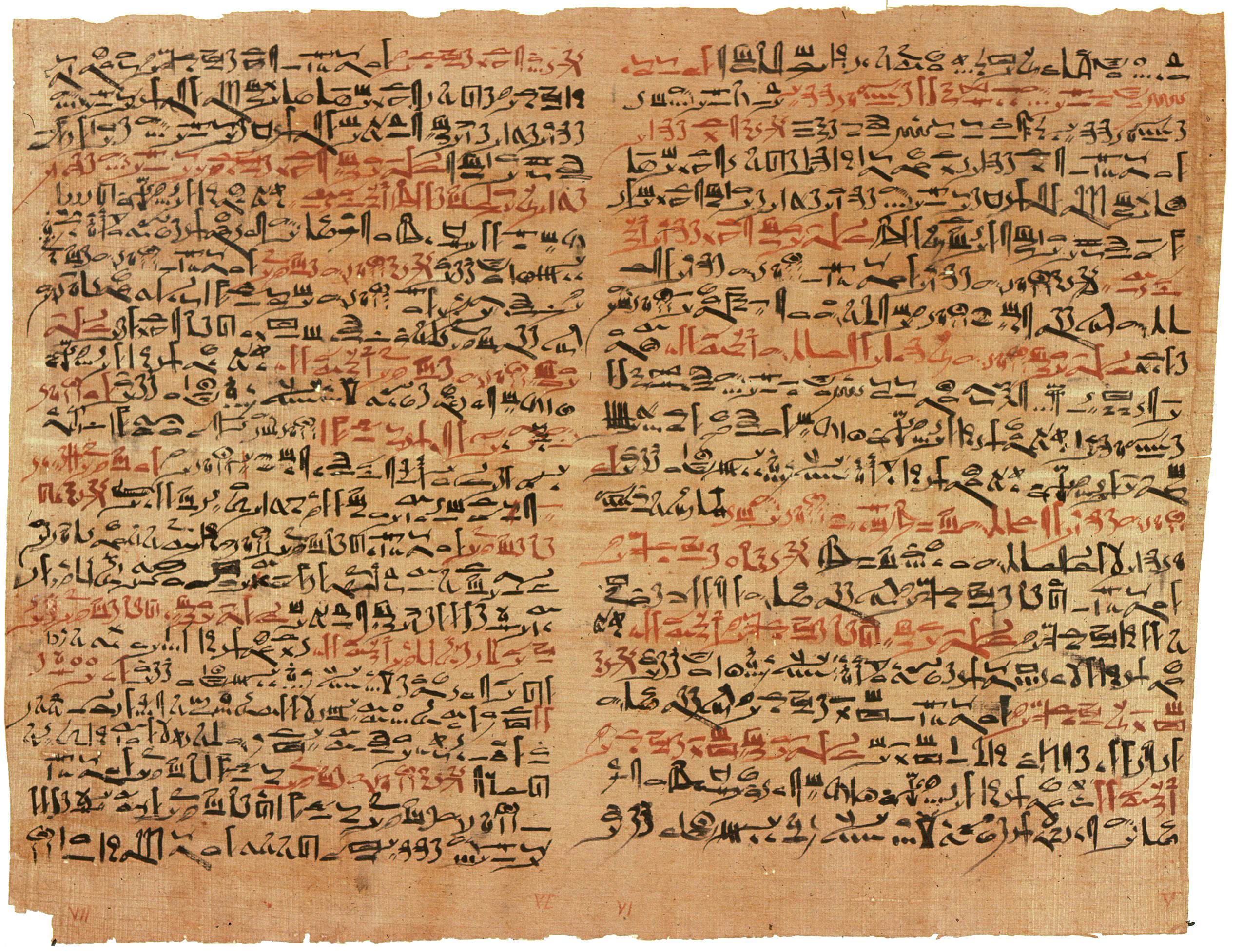Edwin Smith papyrus is an ancient Egyptian medical text. It is named after the American Egyptologist Edwin Smith, who purchased the papyrus scroll in Luxor in 1862. The American scholar James Henry Breasted translated the text into English in 1930 and established its importance. The scroll is the oldest known medical document to describe surgery . Today, the papyrus is kept at the New York Academy of Medicine in New York City.
General description.
Historians have dated the document to 1600 B.C., during the Middle Kingdom of ancient Egypt. The text is written in hieratic, an ancient Egyptian cursive script derived from hieroglyphic writing. The papyrus is approximately 15 feet (4.5 meters) long and 13 inches (33 centimeters) wide. The front side, called the recto, consists of 377 lines of text divided into 17 columns. The recto lists 48 different surgical treatments arranged in anatomical position from head to toe. The back side of the papyrus, called the verso, contains five columns of writing describing eight incantations (spoken or chanted words) against pests and a variety of medical treatments. It discusses treatments for various ailments that affect women and ailments of the anus (lower opening of the digestive tract). There are also recipes for improving complexion and removing wrinkles and other signs of aging.

The Edwin Smith papyrus reveals that early Egyptian physicians had a basic knowledge of human anatomy. For example, the Egyptians used the same word for tendon and vessel, which suggests that they made no distinction between tendons, blood vessels, and nerves. Historians point out that the papyrus has the earliest anatomical reference to the brain in medical literature. This reference appears in case number six on the recto, where the author describes the many ridges and grooves of the brain.
Surgical cases
described on the recto provide instructions for treating dislocations, fractures, and wounds, and for the removal of lesions (skin eruptions). Most of the cases follow the formula of title, followed by an examination, diagnosis, treatment, and further information regarding the case. Surgeries and cautery, a treatment that involves searing the flesh to prevent bleeding, were performed without the benefit of anesthesia . The materials used in these treatments included plugs of linen, medicated bandages and plasters, splints or braces, and chisels made of wood.
Modern historians view the surgical treatments described in the recto as being consistent with scientific medicine. Most of the surgical treatments do not include any appeal to the gods that ancient Egyptians believed influenced every aspect of nature and human activity. Only case number nine includes an incantation for the healing of a wound. However, the verso contains many magical and religious elements commonly found in other ancient Egyptian writings. These elements demonstrate that not only gods and spirits of the dead can bring ailments but that pest-laden winds can as well. The recto and verso of the Edwin Smith Papyrus together provide a picture of the complex character of ancient Egyptian medicine.
